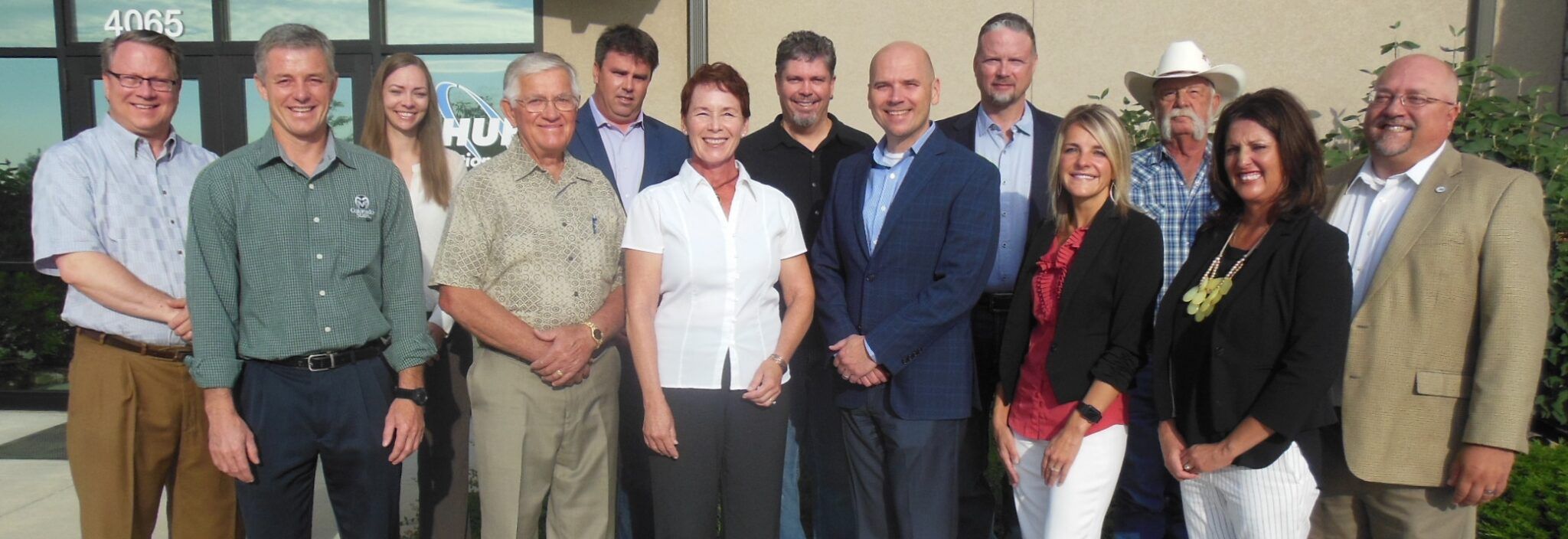Ag industry in NoCo feels squeeze of low commodity prices

LOVELAND — With farm income and commodity prices now at the lowest levels in a decade, the agriculture industry in Northern Colorado is feeling the squeeze.
“Ag is in bad shape right now,” Bill Markham, owner of M&M Farms in Berthoud, announced Tuesday morning during BizWest’s CEO Roundtable on agriculture at the office of Hub International in Loveland.
Participants ranging from dairy farmers to hemp industry executives to college associate deans ticked off myriad reasons for ag’s tough times: a strong U.S. dollar driving down commodity prices, increasing cost of water, oil and gas operations impacting farm land, people wanting to move to less-populated areas but are bringing urban values that don’t fit the land, crop failures and factory breakdowns, and the hot topics of the day — government regulations and the immigrant workforce needed by many to do the work.
SPONSORED CONTENT
People Powered: Preparing Longmont Businesses for Economic Success
Longmont Chamber and FNBO present People Powered on April 24, 2024, aiming to inform business owners about workforce development, housing, and transportation issues.
“Our labor pool is tied to immigration,” said Mary Kraft, a fourth-generation dairy farmer and principal at the Kraft Family Farm in Fort Morgan.
“We have 80 employees, and only five are Anglo,” she said. “We’ve invested in training and education for our employees from animal husbandry to medications to take care of cows. … Right now, we aren’t getting any new people.”
Kraft said there is a finite labor pool for agricultural jobs, and it is mostly Hispanic.
“Working a dairy farm is a 24/7/365 deal. Anglos don’t subscribe to that,” she said.
Jason Brancel, president and chief executive of Agfinity Inc., said a strong U.S. dollar vs. foreign currency is driving commodity prices down. “We’ve become better at importing rather than exporting,” he said.
Markham is confounded by federal government reports that say prices and inventory stocks are up. “I don’t know where the government gets its information,” he lamented.
Markham said there have been crop failures in Colorado, Nebraska and Montana, and that the sugar-beet industry has taken an historical beating because of droughts and the breaking down of a major factory during a critical processing period.
Tom Haren, CEO of AGPROfessionals, said the ag industry doesn’t set commodity prices. It can only attempt to be more efficient to break even or make a profit, aided by innovations in technology.
But not all farmers can afford, or want to employ, technology meant to make farmers more efficient.
“There has been a quick push toward automation (robotics), but a PR (public relations) issue comes with that through a potential negative public perception,” Haren said.
Kraft said machines and technology can’t put hands on an animal or spot the first stages of sickness, that if not treated quickly, can result in a cow’s death.
Haren pointed out that jobs are evolving in ag tech, robotics, mechanical and even legal circles. “These are jobs that people aren’t aware of,” he said.
Preparing farm workers to manage the technology is the responsibility of schools, said James Pritchett, associate dean for the College of Agriculture at Colorado State University.
“That’s our challenge,” he said. “We need to build literacy for this diversification.”
While the number of farms and farmland acreage is giving way to other types of developments, the farmer is often considered a dying breed. But Pritchett pointed out that 65 percent of ag students enrolled at CSU doesn’t have an agricultural background.
When the topic using drones came up, Brancel pointed out that the use of drones helps manage a farm in real time. “They can take the place of scouting the farm from a pickup truck,” Brancel said. Haren said a drone would be a good tool to have.
The land and water issue
Competition for land and the water rights that come with it is the farmer’s biggest problem, said Bruce Johnson, CEO of A. Bruce Johnson & Associates.
“It’s commanding $30,000 to $40,000 an acre just for water. … It’s a competition between oil and gas companies and dairy farmers,” Johnson said, as both industries need large amounts of the liquid.
Haren said ag land prices in Northern Colorado remain strong, but they are slipping farther east.
“Ag land being sold is not being advertised,” Haren pointed out. “It’s being sold by a phone call.”
Hemp making a push
The hemp industry, using cannabis plants to produce food, clothing, plastics and materials for construction, is trying to gain a foothold in the ag industry.
Tim Gordon, president of the Colorado Hemp Association, said the industry is slowly developing and is anxiously waiting the passing of government regulations to make it easier to grow cannabis crops for hemp.
Thirty-six states have approved the growing of hemp for industrial use, and 23,000 acres of land has been registered for hemp planting, but hemp has not necessarily been planted on them, Gordon said.
In Colorado, 12,000 acres have been registered, as has 2 million square feet of space in greenhouses.
Morris Beegle, CEO of Colorado Hemp Co., a Loveland-based organization that supports all things hemp, said it’s a novelty crop that could be rotated into crop production by farmers. He said much of the same equipment used to farm traditional crops can be used, some with modifications, to grow hemp.
Participants
Bruce Johnson, CEO, A. Bruce Johnson & Associates; Jason Brancel, CEO, Agfinity; Tom Haren, CEO, AGPROfessionals; James Pritchett, associate dean, CSU – College of Agriculture; Tim Gordon, president, Colorado Hemp Association; Mary Kraft, principal, Kraft Family Farm; Bill Markham, principal, M&M Farms; Morris Beegle, CEO, Colorado Hemp Co. Moderator: Christopher Wood, editor/co-publisher, BizWest Media. Sponsors: Chris Otto and Becky Leach, EKS&H; Russ Henniger and Jim Sampson, Hub International; Kari Coover and Nadine Trujillo-Rogers, Elevations Credit Union.

